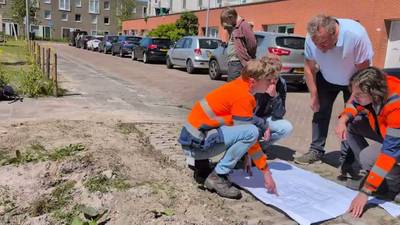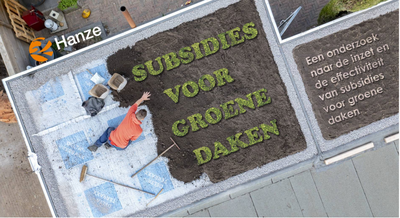As the field of climate adaptation has entered an implementation and acceleration phase, measures for urban water and heat management are rapidly spreading in cities across the globe. Especially nature-based solutions have seen a recent rise in implementation to fight flooding, heat, drought, and biodiversity loss. Despite decades of experience, there is still a lot unknown about the long-term functioning of these measures and how this relates to design, development, and maintenance decisions. To this end, this chapter explores the relations between characteristics and performances of urban nature-based solutions, based on empirical research conducted in over 50 swales throughout the Netherlands between 2021 and 2022. The research combined various fieldwork methods such as full-scale infiltration tests to assess the hydraulic functionality and heavy metal accumulation tests by using an XRF-scanner, as well as neighborhood surveys to assess local perceptions of these swales and their functions. This chapter describes and illustrates these approaches for mapping and assessing the performance of swales, followed by a reflection on their suitability for linking design choices and performance indicators. Based on national guidelines, these indicators help to establish minimal performance quotas to evaluate and compare the performance of swales. While most of the researched swales met national criteria for hydraulic performance, almost a third of investigated swales exceeded norms for heavy metal accumulation. By building up a national database of swales and data derived through measurements, we attempt to find patterns among successes and failures in swale design through cross-case comparison, but conclude that these heavily rely on local circumstances and context-depending design choices. Expanding on mapping, assessment, and evaluation approaches can lead to a better understanding of these context-depending chances and risks for developing nature-based solutions.
DOCUMENT
MULTIFILE

Videoverslag van de jaarlijkse ronde infiltratiesten die we als Hanze in samenwerking met de Gemeente Groningen in verschillende maatregelen doen. Dit keer de West-Indische buurt. De wadi's en doorlaatbare verhardingen zijn terug te vinden op Climatescan, waar we ook de data zullen publiceren.
YOUTUBE

Het lectoraat Nature-based River Management is ruim een jaar geleden van start gegaan. Lector Jantsje van Loon-Steensma richt het onderzoek vooral op de regio. 'Onze studenten komen veelal uit de regio en gaan daar ook vaak werken. Daarom vind ik het belangrijk dat het onderzoek naar natuur-gebaseerde oplossingen dichtbij is. Studenten zijn dan goed voorbereid om een bijdrage te leveren aan een groene en klimaatbestendige regio.'
DOCUMENT

Groene daken duiken steeds vaker op in het straatbeeld – van kleine postzegels op schuurtjes tot uitgestrekte groene oases op fabrieksdaken. Hoewel je ze vanaf de straat niet altijd goed kunt zien zijn ze wel hard nodig voor de leefbaarheid van dorpen en steden: ze vangen regenwater op, zorgen voor verkoeling en dragen bij aan een gezondere leefomgeving. En toch neemt de ontwikkeling van groene daken geen vaart. Veel gebouwen zijn in privébezit, waardoor gemeenten afhankelijk zijn van bewoners en bedrijven die zelf de stap zetten om een groen dak aan te leggen. Het inzetten van subsidies is daarom een populaire maatregel om groene daken aantrekkelijker te maken. Maar werken dit soort subsidies eigenlijk wel? Wie maakt er wel of niet gebruik van, hoe worden de subsidies bepaald en gecommuniceerd, en wat werkt daarin wel en juist niet? In opdracht van de Gemeente Westerkwartier doken we als Hanze met een groep studenten in dit vraagstuk. Waarom blijven aanvragen achter? Wat doen andere gemeenten met deze subsidie? En hoe krijgen we meer mensen enthousiast? Ontdek de antwoorden op al deze vragen in dit gebundelde verslag van studentonderzoeken!
DOCUMENT

''There is a clear demand for a collaborative knowledge-sharing on climate adaptation and mitigation. As a consequence of urban expansion, green spaces are lost and the available areas for pervious green areas are decreasing. Many cities will experience greater impacts from flooding and heatstress due to climate change. Blue-green and small scale Nature-based solutions (NBS) such as bio swales, raingardens and wetlands offer opportunities to adapt urban areas to the impacts of climate change, but their multiple benefits are often unknown to the wider public. Research suggests that effective management of mitigate flood events and heat stress will be achieved by applying a range of NBS measures at different locations in cities [Majidi et al 2019]. Mapping of these (potential) locations for NBS will raise awareness and contribute to capacity building on climate adaptation. Some open source Climate Change Adaptation Platforms (CCAPs) allow mapping of NBS by citizen science and can help to inform and inspire different stakeholders on the topic of climate adaptation in respective region. The aim of most CCAPs is to facilitate an open and free exchange of knowledge on an international scale. Raising awareness about climate adaptation in urban areas and promoting NBS are also key aims.''
DOCUMENT
Klimaatbestendige ‘nature-based solutions’ hebben het doel om gezonde stedelijke omgevingen voor mensen, dieren en planten te creëren. De vraag is of er ook risico's aan klimaatadaptatiemaatregelen voor volksgezondheid kleven, zoals bijvoorbeeld mogelijke ziekterisico’s door muggen en teken.
LINK
Effects of climate change in cities are evident and are expected to increase in the future, demanding adaptation. In order to share knowledge, raise awareness and build capacity on climate adaptation, “ClimateCafés” have been utilized since 2012 in over 50 global events. ClimateCafé is a field education concept involving different fields of science for capacity building in climate adaptation depending on the specific needs of stakeholders. This chapter describes the need, method and results of two ClimateCafés performed in North America in 2022. In North America, there was a clear demand for proof of the long-term efficiency of small-scale urban nature-based solutions (NbS), since the hydraulic capacity of rain gardens and swales is often questioned in low permeable soils and high groundwater tables. The main research question in the ClimateCafés is: Which variation of the (un)saturated infiltration capacity can be expected under conditions with low permeable soil and high groundwater tables (under sea level)? To answer this research question, participative monitoring of NbS has taken place on swales and rain gardens implemented in New Orleans (under sea level) and Vancouver (bed rock). The ClimateCafés aimed at generating context-specific data on nature-based solutions by using open-source tools and cost-effective data collection techniques. The results of the workshops show that relevant, multidisciplinary data can be gathered in a short period of time with limited resources. As example, over 500 individual NbS projects are mapped in both cities from which a selection is made for field research with several stakeholders. The method of the conducted research consisted of a full-scale testing method, measuring the long-term infiltration capacity of rain gardens and swales installed in the last two decades. The results show a high variation of empty times for rain gardens and swales (26–300 mm/h) with fast decreasing infiltration capacity after saturation of the soil (second test showed a decrease in the order of 35%). The ClimateCafés stimulated accelerated climate action and support for national and international knowledge exchange in adaptation solutions for a climate resilient future. Besides raising awareness and capacity building, the evaluation of the outcomes of the ClimateCafés Vancouver and New Orleans lead to practical guidelines and cost-effective interventions to optimize the performance of existing NbS and a strategy for implementing optimized NbS in the near future.
LINK
Het woord ‘bias’ komt naar voren in zowel maatschappelijk als wetenschappelijk debat over de inzet van artificiële intelligentie (ai). Het verwijst doorgaans naar een vooroordeel dat iets of iemand vaak onbedoeld heeft. Wanneer dit vooroordeel leidt tot een afwijking in besluitvorming vergeleken met een situatie wanneer dit vooroordeel er niet zou zijn, dan is een bias doorgaans onwenselijk.
LINK